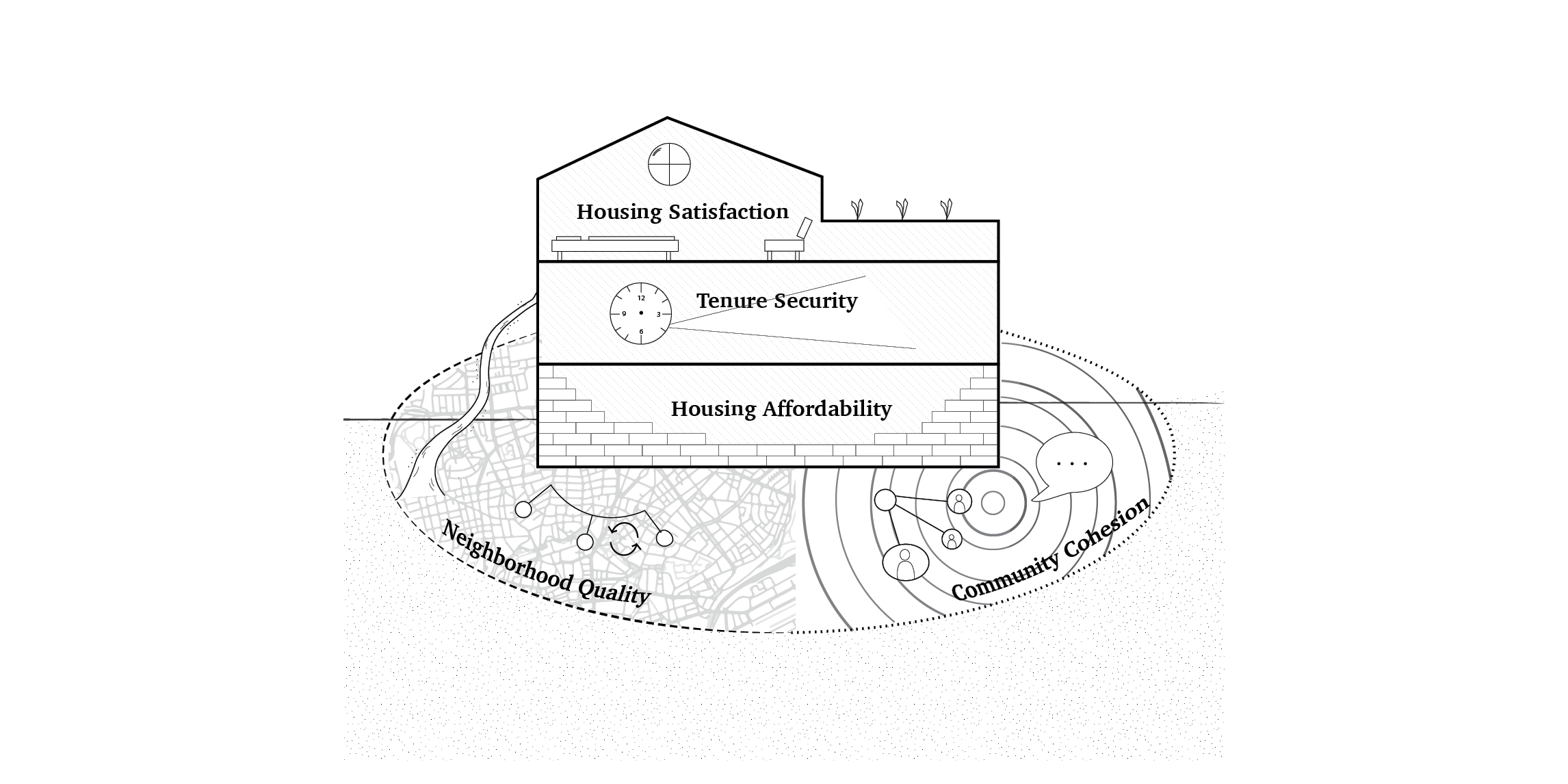New Paper on Housing Precarity in Six European and North American Cities
The SPUR research group has published a new paper on housing precarity in six European and North American cities. Urban residents worldwide are challenged by increasing housing precarity, such as unaffordability of rents, insecurity of tenancy contracts, or residents’ displacement. The paper thus aims to contribute to this urgent topic by asking, “Who experiences housing precarity how?” in six major cities of the Global North (Berlin, Chicago, L.A., London, New York, Paris).
What do results show? By building on an original survey with 12,611 respondents from the six cities, we estimated multi-level mixed-effects linear regression models. We found that external pagerenters were negatively associated with all five housing precarity dimensions introduced (see Figure), rendering them more precarious than homeowners. We also found that, whereas external pageolder residents experienced housing precarity differently than younger residents, they were not necessarily more precarious than residents under 40. Moreover, our results indicate that external pagehouseholds with children and residents who identified as belonging to a external pageminority had a higher perceived neighborhood quality and community cohesion. In contrast, they experienced less tenure security and housing satisfaction than households without children and non-minorities. These results were largely robust across the six cities.
Learnings for urban planners? Considering the challenges of land scarcity, urban densification, and intensive renewal that are evolving in many cities globally, our findings may help urban planning actors to reflect better who is affected how by housing precarity. Our findings can help urban planners to integrate a more external pageresident-centered approach into their external pageplanning strategies. To support more sensitive planning interventions toward people’s differing perceptions and housing needs, they could, for instance, pursue renter-specific housing stabilization policies (e.g., rent control or protection) or targeted support mechanisms for older ages on the neighborhood level (e.g., community activation programs).
The paper can be read external pagehere.

